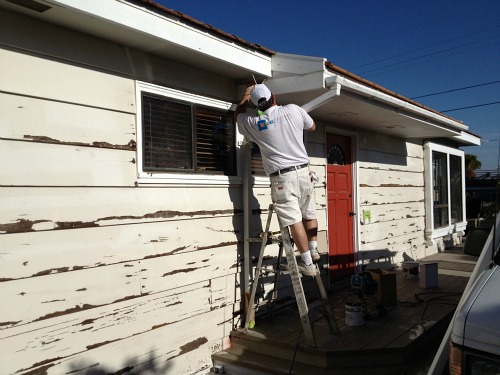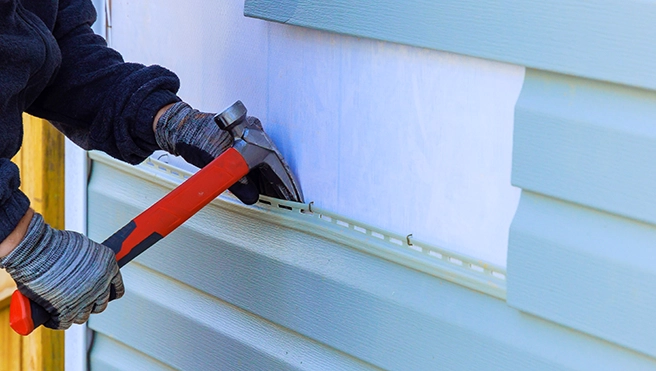Jacksonville Beach handyman services: Mistakes to Avoid

Owning a coastal home comes with big perks—ocean breezes, sandy walks, and laid-back living—but it also brings unique repair risks that can get expensive fast if you miss early warning signs. Salt air accelerates corrosion. Humidity swells doors and feeds mold. Afternoon storms drive water into tiny gaps you didn’t know existed. Many Jacksonville Beach homeowners unintentionally make small mistakes that balloon into costly repairs.
This guide explains the most common pitfalls and how to prevent them. You’ll learn what’s safe to DIY, what to leave to the pros, and the materials and methods that stand up best to our coastal climate. Mark of Jax Beach Handyman has helped countless neighbors avoid repeat issues by focusing on durable, coastal-ready solutions—and this playbook brings those lessons to your doorstep. If you’d like tailored advice for your property, local handyman services can inspect, prioritize, and fix issues before they spread.
Why Jacksonville Beach Homes Are Vulnerable
Coastal living is tough on building materials. Here’s why:
| Factor | How It Affects Your Home | Smart Prevention |
|---|---|---|
| Salt Air | Speeds up rust on fasteners, railings, hinges; dulls and pits metal fixtures; breaks down paint and sealants faster. | Use marine-grade stainless (316) when possible; rinse exterior metal with fresh water; repaint/seal more frequently with coastal-rated products. |
| High Humidity | Swells wood doors/windows; encourages mold/mildew; degrades caulk and adhesives; causes cupping in floors. | Dehumidify, ensure HVAC is balanced; use moisture-resistant materials; ventilate baths/laundry; re-caulk with mildew-resistant, flexible sealants. |
| Intense Sun & UV | Fades paint/stain; dries and cracks sealants; weakens plastics; accelerates roof wear. | Choose UV-stable finishes; schedule repainting before failures; consider lighter colors that reflect heat. |
| Wind-Driven Rain & Storms | Forces water under shingles and flashing; opens small leaks; pushes moisture into soffits, fascia, and around doors. | Regular roof/attic inspections; upgrade to storm-rated fasteners and flashing; maintain gutters and drainage. |
| Aging Coastal Materials | Older homes may have incompatible coatings, corroded fasteners, and outdated ventilation that trap moisture. | Material upgrades during repairs; replace ferrous fasteners; add ventilation and modern moisture management. |
Top Home Repair Mistakes to Avoid
These are the errors we see most often in Jacksonville Beach—plus how to avoid them.
| # | Mistake | Why It Happens | How to Avoid It |
|---|---|---|---|
| 1 | Ignoring small water stains | Assuming it’s “just humidity” or a one-time issue. | Trace stains to the source; inspect roof, flashing, windows, and plumbing; fix and dry fully to prevent mold. |
| 2 | Using interior-grade caulk outdoors | Caulk labels can be confusing; cheaper products seem fine at first. | Use exterior, paintable, flexible, mildew-resistant caulk; for wet areas and trim, consider high-quality polyurethane or hybrid sealants. |
| 3 | Choosing the wrong paint | Interior paints can look great initially but fail fast outside. | Pick exterior, UV- and mildew-resistant coatings; prep with sanding, cleaning, and primer suited to substrate and salt air. |
| 4 | DIY electrical fixes | Online tutorials make it look simple; unseen code and safety issues get missed. | Hire licensed pros for wiring, panels, GFCIs, and appliance circuits; safety and insurance depend on it. |
| 5 | Delaying roof inspections | Shingles look fine from the ground; small leaks are hidden. | Schedule seasonal inspections, especially after storms; check flashing, vents, skylights, soffits, and attic for moisture. |
| 6 | Skipping gutter cleaning | Few trees nearby? It still clogs with sand, shingle grit, and salt buildup. | Clean and flush gutters and downspouts twice a year; verify drainage flows away from the foundation. |
| 7 | Not ventilating bathrooms and laundry | Fans are noisy or underpowered; vents terminate in attic. | Install quiet, properly sized fans; vent outdoors, not into attic; use timers/humidity sensors. |
| 8 | Fastening with the wrong metals | Standard steel screws are cheap but corrode quickly near the beach. | Use 316 stainless or hot-dipped galvanized for exterior; avoid mixing metals that cause galvanic corrosion. |
| 9 | Blocking attic ventilation | Insulation covers soffit vents; ridge vents are dirty. | Keep soffit/ridge vents clear; balance intake/exhaust; reduce heat and moisture to prolong roof life. |
| 10 | Caulking over mold or damp wood | Rushing a fix to keep water out. | Dry thoroughly; clean with appropriate solutions; only seal over dry, sound surfaces to ensure adhesion. |
| 11 | Overlooking door and window flashing | Assuming visible caulk is enough. | Inspect and repair flashing; ensure sloped sills, housewrap integration, and head flashing are correct. |
| 12 | Using untreated wood outdoors | Pressure-treated or composite seems pricier up front. | Choose treated lumber or composites; seal cut ends; maintain with coastal-grade finishes. |
| 13 | Under-sizing dehumidification | Relying on AC alone in humid months. | Add stand-alone dehumidifiers where needed; keep indoor RH ~45–55% to protect finishes and furnishings. |
| 14 | Neglecting fence and gate hardware | Hinges and latches seize or sag due to rust and swelling. | Use corrosion-resistant hardware; adjust seasonally; lubricate and rinse with fresh water periodically. |
| 15 | Patch painting without sanding/priming | Trying to save time; poor adhesion in salty, chalky films. | Wash to remove salt/chalk; sand feather edges; spot-prime bare areas; then topcoat with compatible paint. |
Question: What Repairs Should Be Left to Pros?

Some projects look simple but carry hidden risks or code requirements. Consider hiring a licensed professional for:
- Electrical work: new circuits, panel issues, GFCI/AFCI installs, aluminum-to-copper pigtailing.
- Plumbing: main line leaks, sewer backups, water heater installs, slab leaks.
- Roofing: replacing shingles, modifying flashing, skylight installs, structural sheathing repairs.
- Structural carpentry: joists, beams, load-bearing walls, deck ledger attachments.
- Window/door replacements: proper flashing integration to prevent hidden leaks.
- Large tile or shower pan rebuilds: waterproofing membranes must be precise to prevent rot and mold.
- Gas lines or HVAC work: safety and permits are essential.
For many other tasks—like trim carpentry, caulking, paint prep, minor drywall repair, or hardware swaps—skilled help can complete the job faster and more durably than a weekend DIY approach, especially in our salt-and-humidity environment.
Common Signs Your Home Needs Attention (FAQ-style)
See something? Use these quick checks to decide the next step.
Why does my home smell musty after rain?
A musty odor suggests elevated moisture. Check for roof or flashing leaks in the attic, poorly vented bathrooms, or damp crawl spaces. Verify bathroom fans vent outdoors and re-caulk any failed seals around tubs, showers, and windows.
What causes bubbling or peeling paint on exterior trim?
Moisture behind the paint film or UV breakdown. Scrape, sand, prime with a bonding/ stain-blocking primer, and repaint with an exterior, UV- and mildew-resistant coating. Fix any nearby leaks first.
How do I know if my caulk has failed?
Look for cracks, gaps, or loose edges, especially around windows, doors, and wet areas. If caulk pulls away when pressed, it’s time to remove and re-apply the right exterior-grade sealant.
Are rusted screws and hinges a problem, or just ugly?
Both. Rusted fasteners lose strength and stain nearby surfaces. Replace with 316 stainless or hot-dipped galvanized hardware and rinse with fresh water occasionally to slow corrosion.
What does a dark line on ceiling drywall mean?
Often a moisture path from a roof or HVAC issue. Inspect attic insulation and ductwork for condensation and check roof penetrations like vents and skylights for leaks.
Why are my doors sticking more in summer?
Wood swells in high humidity. Dehumidify, check weatherstripping, adjust hinges/strike plates, and consider slight planing once humidity is controlled. Make sure finish coats are intact.
What’s the fix for chalky, powdery exterior paint?
That’s paint oxidation intensified by salt and sun. Wash to remove chalk and salt, then prime and repaint with a quality exterior coating.
Is a small roof leak urgent?
Yes. Even tiny leaks can feed mold or rot sheathing and rafters. Address immediately and inspect for hidden damage.
Why does grout keep cracking in my shower?
Movement from temperature/humidity changes or insufficient backing. Replace with flexible sealant at change-of-plane areas and evaluate substrate and waterproofing if failures persist.
How often should I service exterior wood decks?
Annually evaluate for fastener corrosion and surface wear; clean and reseal every 1–2 years with coastal-rated products, and replace rusted hardware promptly.
Why Hiring a handyman services Expert is Crucial in Salt Air Zones

Coastal repairs aren’t just about aesthetics—they’re about materials, moisture control, and long-term durability. Here’s how DIY compares to professional results in our climate:
| Task | DIY Outcome (Common) | Pro Outcome (Coastal Best Practice) |
|---|---|---|
| Exterior caulking | Hardware-store latex caulk applied over damp or dirty joints; cracks reappear within months. | Surface cleaned and dried; joint sized and primed if needed; high-quality, flexible exterior sealant chosen for UV/mildew resistance. |
| Trim and siding paint | Minimal prep; oxidation left in place; paint chalks and peels early. | Salt/chalk wash, sand, repair, prime appropriately, and apply UV-stable coatings for longer life near the ocean. |
| Door and window fixes | Planed edges without addressing humidity; sticking returns each season. | Humidity managed; weatherstripping adjusted; flashing and sill pan issues corrected to keep moisture out. |
| Deck and fence hardware | Standard screws rust; boards loosen. | 316 stainless or hot-dipped galvanized fasteners; proper spacing and drainage to deter rust and rot. |
| Roof leak “patches” | Caulked from the outside; leak shifts elsewhere. | Source identified; flashing repaired; attic checked for hidden moisture and mold. |
If you’re unsure which materials are coastal-rated, local handyman services can specify what lasts near the ocean and stand behind the work.
Seasonal Strategies to Prevent Repairs
Routine, seasonal attention prevents the vast majority of surprises. For a step-by-step plan tailored to our climate, see Essential Seasonal Home Maintenance Guide for Jacksonville Homeowners. A few highlights:
- Spring: Inspect roof and flashing after winter fronts; clean gutters; tune up exterior caulk and trim.
- Summer: Manage humidity; service bathroom and kitchen ventilation; check for sun/UV damage and repaint if needed.
- Fall: Prepare for storm season; secure loose fencing; test sump/yard drainage; review window and door weatherstripping.
- Winter: Address settling cracks; schedule indoor repairs; plan exterior projects for drier months.
Humidity Issues That Lead to Bigger Problems
Humidity is the quiet culprit behind swelling doors, window binding, and mold. Left unaddressed, those “nuisances” can buckle floors and rot trim. For door and window issues specifically, bookmark Fixing Stuck Doors & Swollen Windows in Jacksonville’s Humid Weather. And remember:
- Keep indoor RH between 45–55% with balanced HVAC and supplemental dehumidification.
- Use timers or humidity sensors on bath fans; vent to the exterior, not the attic.
- Seal penetrations and keep exterior paint and caulk in good condition to block moist air infiltration.
Homeowner Quick-Fix Checklist vs. Call-a-Pro List
Use this side-by-side guide to choose the right path.
| DIY Safe (With Basic Tools) | Should Hire a Pro |
|---|---|
| Replace door hardware; lubricate hinges and locks. | Rehang sagging doors caused by framing issues; correct misaligned exterior thresholds. |
| Re-caulk small interior gaps around tubs and sinks. | Rebuild shower pans; large tile repairs; moisture intrusion behind walls. |
| Patch small drywall holes and repaint. | Persistent ceiling stains; suspected roof or plumbing leaks. |
| Clean and flush gutters; install splash blocks. | Replace rotted fascia/soffits; correct complex gutter pitch or integrate new downspouts. |
| Replace weatherstripping; adjust strike plates. | Window/door replacements; flashing corrections; sill pan installations. |
| Basic deck/fence cleaning and sealing. | Structural deck repairs; ledger board replacement; stair rebuilds. |
| Install shelving and simple storage solutions. | Open walls that may hide wiring or plumbing; load-bearing changes. |
| Replace exterior light fixtures (same wiring). | New circuits; panel work; code upgrades; GFCI/AFCI troubleshooting. |
When in doubt, a quick safety check or estimate from local handyman services can prevent costly missteps.
Trends Over Time: What Coastal Homes Commonly Face
While every home is unique, Jacksonville Beach properties tend to experience seasonal patterns of repair needs. Here’s a year-round snapshot to help you anticipate issues:
By Season
- Winter (cool, occasional dry spells): Interior projects, drywall and trim fixes, repainting, hardware and door adjustments.
- Spring (storms, pollen, rising humidity): Gutter cleaning, roof and flashing inspections, fence/gate tune-ups, exterior caulk and paint prep.
- Summer (high heat and humidity): Dehumidification tweaks, bathroom ventilation upgrades, stuck doors/windows, exterior paint maintenance.
- Fall (storm prep): Fence and gate reinforcement, drainage checks, soffit/fascia repairs, window/door weatherproofing.
Common Repair Requests (Typical Pattern)
- Exterior caulking and paint maintenance: ■■■■■■■■■
- Door/window sticking and weatherstripping: ■■■■■■■■
- Gutter and drainage corrections: ■■■■■■■
- Fence and gate hardware replacement: ■■■■■■
- Deck fastener corrosion and board repairs: ■■■■■
- Minor drywall/ceiling water stain investigation: ■■■■■
- Attic ventilation issues: ■■■■
Use this pattern to schedule proactive checks before the peak season for each issue. Early action increases the odds of small, affordable fixes instead of major overhauls.
Value of Working With a Local Fully-Vetted Handyman
Coastal conditions create a unique maintenance rhythm. A trusted local expert understands which materials survive salt and sun, how humidity shifts doors and trim, and which fixes hold up through summer storms. Benefits include:
- Local insight: Knowledge of neighborhood-specific challenges (wind exposure, drainage, older materials).
- Quality materials: Guidance on 316 stainless vs. galvanized, exterior primers that bond in salt air, and sealants that remain flexible.
- Prevention-first approach: Spotting small failures—like hairline caulk cracks—before they become leaks.
- Consistency: One point of contact familiar with your home’s history and previous repairs.
- Efficiency: Right tools and methods to work quickly and safely, reducing callbacks and repeat issues.
If you prefer a single, dependable contact who knows your property and climate, consider establishing an ongoing relationship with local handyman services for seasonal checkups and timely repairs.
Action Plan: Prevent Mistakes Before They Start
Monthly
- Walk the exterior after heavy rain; look for fresh stains, soft trim, or drips from soffits.
- Check doors and windows for sticking; monitor indoor humidity levels.
- Rinse salt from exterior metal fixtures and railings.
Quarterly
- Test GFCIs; inspect caulk lines; clean bathroom fan covers.
- Flush gutters and downspouts; confirm water flows away from the foundation.
- Spot-prime and paint small exterior failures before they spread.
Annually
- Full roof and attic inspection; service exterior wood (decks, fences) and replace corroded fasteners.
- Evaluate bathroom and kitchen ventilation; upgrade if moisture persists.
- Plan exterior repainting schedules based on sun/salt exposure (shorter cycles near the oceanfront).
Putting It All Together: A Coastal-Ready Mindset
Jacksonville Beach homes last longer when maintained with a coastal lens. That means choosing corrosion-resistant fasteners, sealing and painting with products engineered for salt air, ventilating to control humidity, and inspecting after storms. Most importantly, act quickly on small red flags—water stains, cracked caulk, sticking doors—before they escalate.
Conclusion
Coastal living rewards homeowners who stay proactive. Focus on moisture control, corrosion-resistant materials, and timely inspections to prevent costly surprises. Use the seasonal plan, watch for the telltale signs in this guide, and call in a pro for electrical, roofing, structural, or complex waterproofing work. When you’re ready for a confident, local evaluation, Mark at Jax Beach Handyman can walk your property, prioritize fixes, and recommend durable solutions. Schedule trusted handyman services today to protect your home and your budget.
